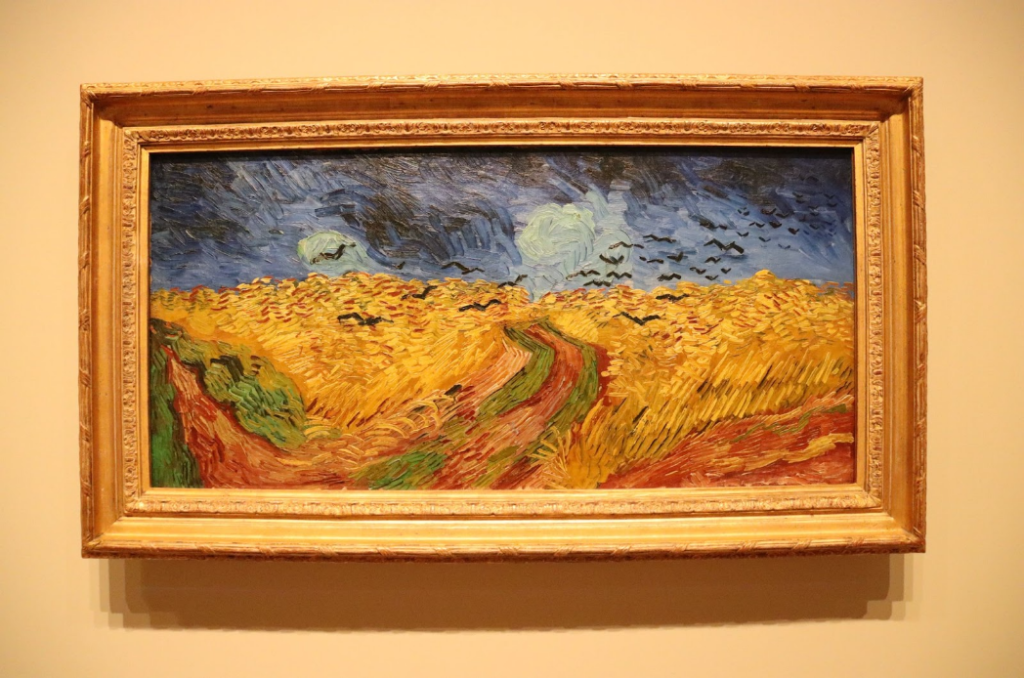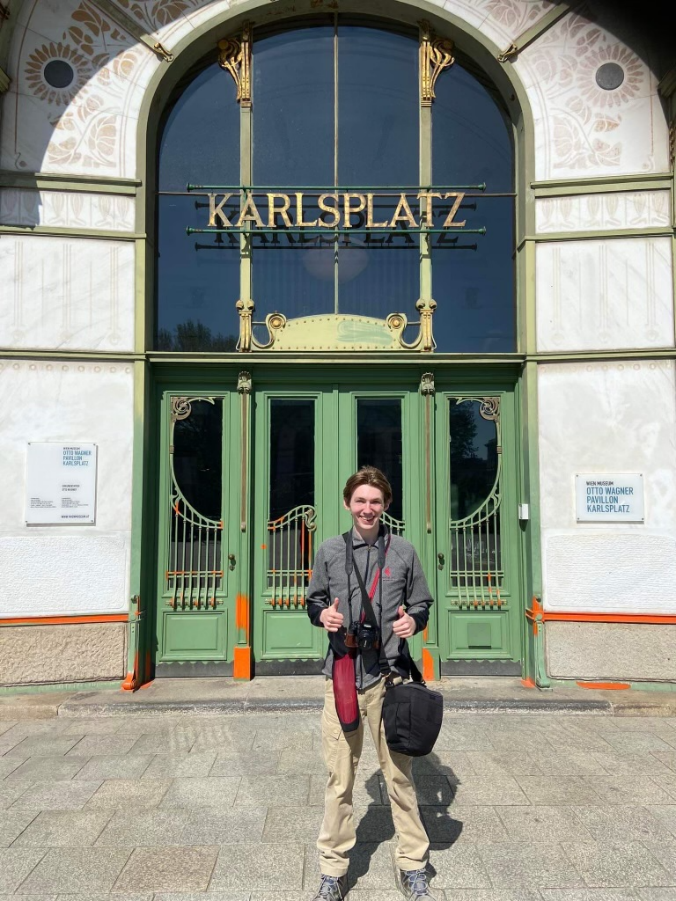Through the Givens scholarship, I had an incredible opportunity to thoroughly explore the art museums and historic sites of Paris as well as visit several other cities across Europe such as Vienna, Munich, Barcelona, London, and Amsterdam seeking out important modern art collections, exhibitions, and architecture.
To single out one of the collections I was most impressed with, I must say it was that of the Van Gogh Museum in Amsterdam, which had its genesis in the paintings maintained by the artist’s beloved brother Theo Van Gogh. I attended the opening day premiere of the “Van Gogh in Auvers” exhibition, which gathered most of the seventy-four paintings that he produced during his final three months living in Auvers-sur-Oise before his tragic death in July of 1890.
It was fascinating to see the evolution of his depictions of the idyllic village throughout that short span of time. In his final weeks as his mental condition rapidly deteriorated, he crafted several unusual panoramic landscapes on long horizontal canvases. These often-vigorous scenes were incredible to see displayed in the same room as part of this once-in-a-lifetime experience. Wheatfield Under Thunderclouds was particularly striking, as was the iconic Wheatfield with Crows.

Displayed within the context of his (alleged) suicide, it was clear to see how his highly expressive and emotional style imbued within these final works heavily influenced the following generations of German expressionists that I was able to discover in Munich, Vienna, and at a special exhibition on Edvard Munch in Paris.
I sought in many cases to connect the art with the artists and the places that inspired them. That is why I often scouted out the homes, studios, and even the final resting places of these artists in Paris along with some other locations that I had the privilege of visiting. Places have tremendous power, which is why I always value travel to historic places, and I found that to be absolutely true upon my visit to the town of Auvers-sur-Oise, France (this was before I saw the exhibition at the Van Gogh Museum.)
This small village located thirty kilometers from Paris has a great artistic heritage, being home to the Barbizon school painter Dobigny, then home to a Dr. Gachet, who promoted Impressionists and Postimpressionists such as Camille Pissarro and Paul Cezanne. Vincent Van Gogh was relocated to this village in order to be under the appreciative doctor’s (supposedly) close watch. During my time in that town, I tracked down the church that he painted (and where the priests refused to have his funeral,) the Auberge Ravoux where he lived and died, as well as the graves of Vincent and Theo located above the town.
That cemetery is surrounded by the sprawling wheatfields that Vincent wandered in during his final restless weeks, and where he shot himself. Additionally, I actually located the still-visible divergent paths where he painted Wheatfield with Crows just days before his death. It was incredibly powerful to stand there in the blistering wind as the bells tolled from the church he made iconic. I deeply respect the intelligent, sensitive, and innovative man that he was and the fact that he struggled personally and was so shunned by others within his own lifetime. Being able to both follow in his footsteps in Auvers and also to explore his artistic portfolio and evolution in museums such as the Van Gogh Museum, Musée d’Orsay and others was both amazing and deeply profound.

While this example is perhaps most imprinted in my mind, I applied the same treatment to several other artists such as Claude Monet in Giverny, Gustav Klimt in Vienna, Pablo Picasso between Barcelona and Paris, Wassily Kandinsky between Munich and Paris, and many other great modern artists.
I feel that my understanding of art history and particularly the development of modern art has been invariably enhanced by my recent travels. I wish to express my gratitude to the Givens family for sponsoring this meaningful adventure for myself and other Wabash students. I have appreciated art history since I read Mike Venezia’s artist biographies for kids when I was about six years old, so finally getting to see many great masterpieces, from Vermeer’s Lacemaker to Dalí’s Soft Self-Portrait with Grilled Bacon has been the experience of a lifetime!
